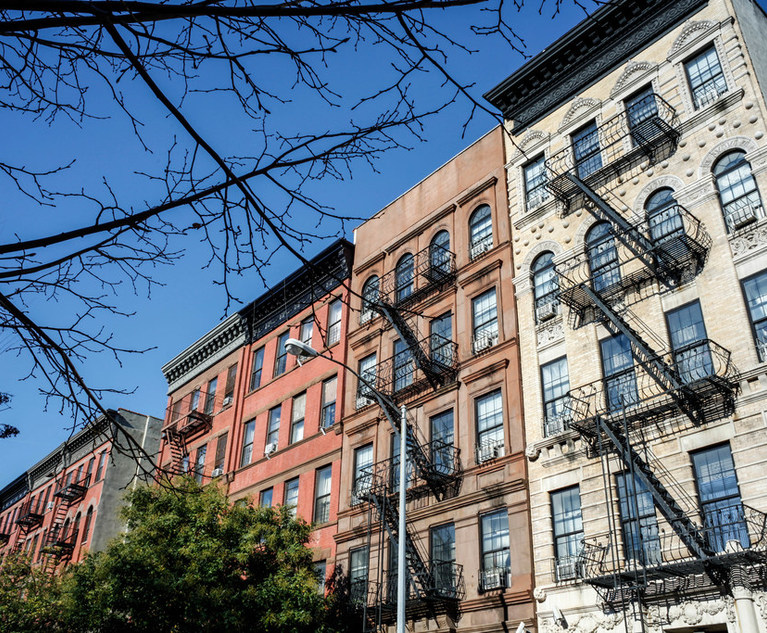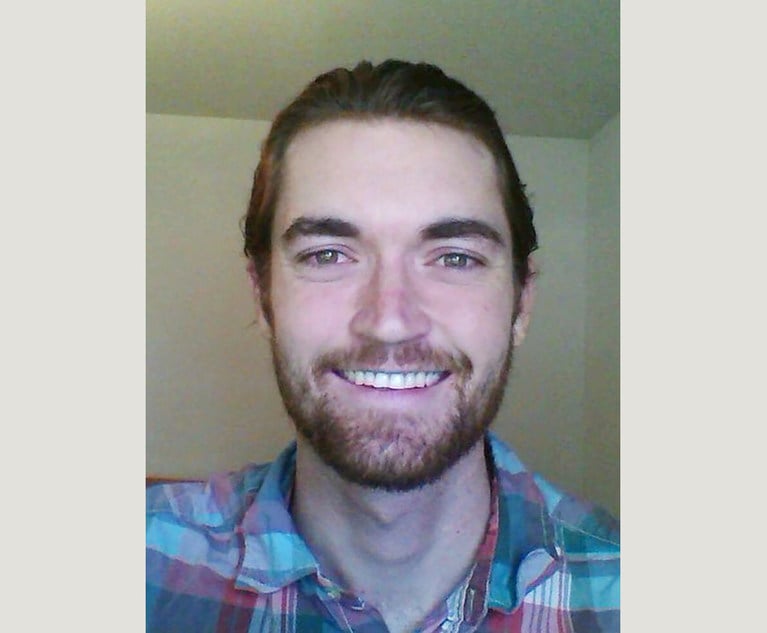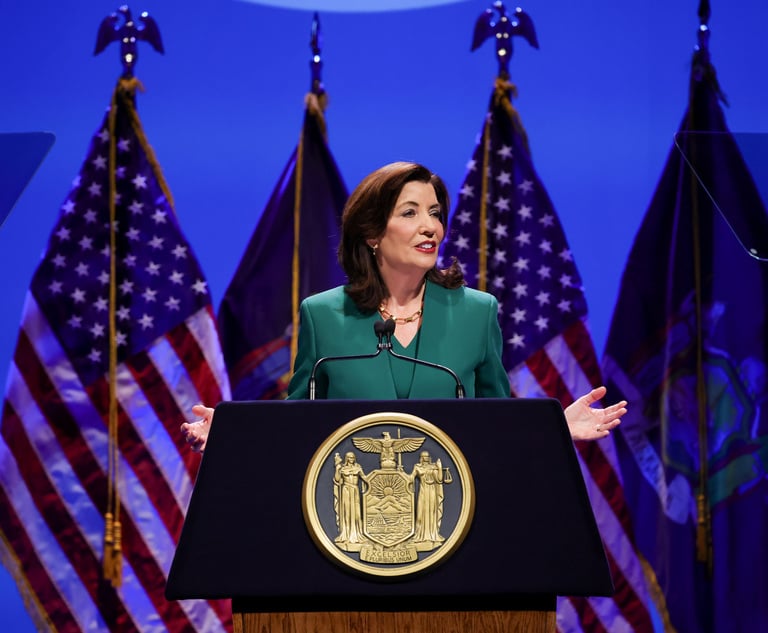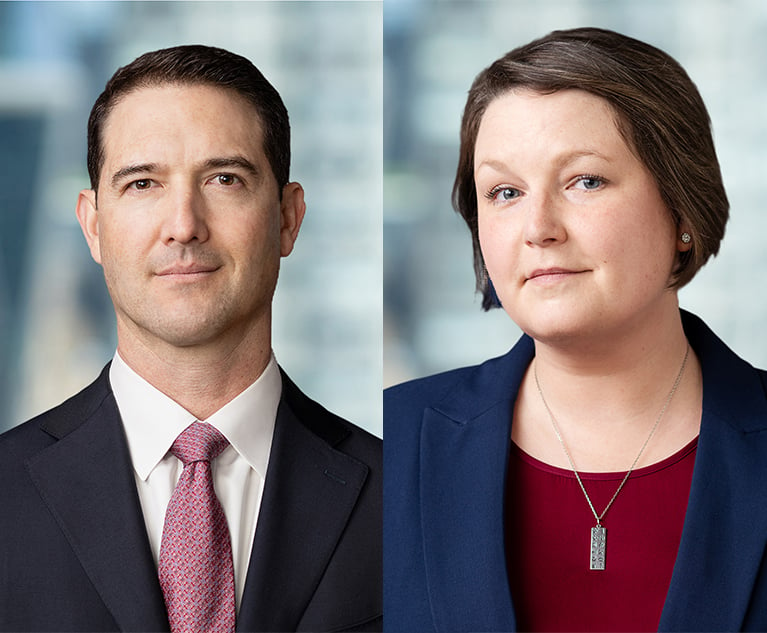Governor Brings New York's Housing Crisis Into Focus
This article outlines recent proposals from Gov. Kathy Hochul and the state legislature to address this crisis, as well as a novel challenge to a recent New York City rezoning that included a major affordability component. The new mayor has yet to release his plans but appears to be on board with the Governor's proposals so far.
March 02, 2022 at 12:00 PM
9 minute read
 The United States lacks some almost five million housing units needed to meet current demand. New York state and City face similar shortfalls. For example, the City's housing plan notes there are an estimated one million New York City households that qualify as low or extremely low income and only 424,000 units of housing available at rents they can afford. What is a shortage for middle-income and upper-income New Yorkers is therefore a full-blown crisis for working-class and low-income New Yorkers. This article outlines recent proposals from Gov. Kathy Hochul and the state legislature to address this crisis, as well as a novel challenge to a recent New York City rezoning that included a major affordability component. The new mayor has yet to release his plans but appears to be on board with the Governor's proposals so far.
The United States lacks some almost five million housing units needed to meet current demand. New York state and City face similar shortfalls. For example, the City's housing plan notes there are an estimated one million New York City households that qualify as low or extremely low income and only 424,000 units of housing available at rents they can afford. What is a shortage for middle-income and upper-income New Yorkers is therefore a full-blown crisis for working-class and low-income New Yorkers. This article outlines recent proposals from Gov. Kathy Hochul and the state legislature to address this crisis, as well as a novel challenge to a recent New York City rezoning that included a major affordability component. The new mayor has yet to release his plans but appears to be on board with the Governor's proposals so far.
Eliminate the State's CAP of 12.0 on FAR. In the State of the State address, the Governor announced her intention to propose legislation to lift the 12.0 FAR cap on residential density in the Multiple Dwelling Law—a concern mostly in New York City. Section 26 of the law currently prohibits residential buildings on a "lot" from having a floor-area-ratio (FAR) of more than 12.0. For example, a 10,000-square foot lot can contain no more than 120,000 square feet of floor area. As a practical matter, New York City's Zoning Resolution and local zoning codes across the state impose much lower caps on development in the vast majority of neighborhoods. But in the handful of residential neighborhoods that already allow 12 FAR residential development (almost exclusively in Manhattan), lifting the cap could provide some housing expansion opportunities.
The State Legislature imposed the 12.0 FAR cap in 1960 very purposely to limit building densities and ensure that there was some proportion between lot size and building size. See 1960 N.Y. Laws c. 1072 §1, amended 1961 N.Y. Laws c. 748, §1. The Legislature's 1960 committee report stated the limit was adopted to "serve[] as a curb on excessive population density." In the decades before the law's passage, "residential dwellings ha[d] risen to a height of three times the width of the widest street on which they abut." The Committee viewed this "burgeoning growth" as a potentially "destructive force" which, by sacrificing light, air, and open space, can "produce an environment that is neither desirable nor healthful for urban living." Report of the Joint Legislative Committee on Housing and Multiple Dwellings 86-87 (1960).
This content has been archived. It is available through our partners, LexisNexis® and Bloomberg Law.
To view this content, please continue to their sites.
Not a Lexis Subscriber?
Subscribe Now
Not a Bloomberg Law Subscriber?
Subscribe Now
NOT FOR REPRINT
© 2025 ALM Global, LLC, All Rights Reserved. Request academic re-use from www.copyright.com. All other uses, submit a request to [email protected]. For more information visit Asset & Logo Licensing.
You Might Like
View All
Silk Road Founder Ross Ulbricht Has New York Sentence Pardoned by Trump
3 minute read
Bipartisan Lawmakers to Hochul Urge Greater Student Loan Forgiveness for Public-Interest Lawyers


Anti-Abortion Groups' Challenge to New York's 'Boss Bill' Is Returning to Federal Trial Court
Law Firms Mentioned
Trending Stories
- 1Fresh lawsuit hits Oregon city at the heart of Supreme Court ruling on homeless encampments
- 2Ex-Kline & Specter Associate Drops Lawsuit Against the Firm
- 3Am Law 100 Lateral Partner Hiring Rose in 2024: Report
- 4The Importance of Federal Rule of Evidence 502 and Its Impact on Privilege
- 5What’s at Stake in Supreme Court Case Over Religious Charter School?
Who Got The Work
J. Brugh Lower of Gibbons has entered an appearance for industrial equipment supplier Devco Corporation in a pending trademark infringement lawsuit. The suit, accusing the defendant of selling knock-off Graco products, was filed Dec. 18 in New Jersey District Court by Rivkin Radler on behalf of Graco Inc. and Graco Minnesota. The case, assigned to U.S. District Judge Zahid N. Quraishi, is 3:24-cv-11294, Graco Inc. et al v. Devco Corporation.
Who Got The Work
Rebecca Maller-Stein and Kent A. Yalowitz of Arnold & Porter Kaye Scholer have entered their appearances for Hanaco Venture Capital and its executives, Lior Prosor and David Frankel, in a pending securities lawsuit. The action, filed on Dec. 24 in New York Southern District Court by Zell, Aron & Co. on behalf of Goldeneye Advisors, accuses the defendants of negligently and fraudulently managing the plaintiff's $1 million investment. The case, assigned to U.S. District Judge Vernon S. Broderick, is 1:24-cv-09918, Goldeneye Advisors, LLC v. Hanaco Venture Capital, Ltd. et al.
Who Got The Work
Attorneys from A&O Shearman has stepped in as defense counsel for Toronto-Dominion Bank and other defendants in a pending securities class action. The suit, filed Dec. 11 in New York Southern District Court by Bleichmar Fonti & Auld, accuses the defendants of concealing the bank's 'pervasive' deficiencies in regards to its compliance with the Bank Secrecy Act and the quality of its anti-money laundering controls. The case, assigned to U.S. District Judge Arun Subramanian, is 1:24-cv-09445, Gonzalez v. The Toronto-Dominion Bank et al.
Who Got The Work
Crown Castle International, a Pennsylvania company providing shared communications infrastructure, has turned to Luke D. Wolf of Gordon Rees Scully Mansukhani to fend off a pending breach-of-contract lawsuit. The court action, filed Nov. 25 in Michigan Eastern District Court by Hooper Hathaway PC on behalf of The Town Residences LLC, accuses Crown Castle of failing to transfer approximately $30,000 in utility payments from T-Mobile in breach of a roof-top lease and assignment agreement. The case, assigned to U.S. District Judge Susan K. Declercq, is 2:24-cv-13131, The Town Residences LLC v. T-Mobile US, Inc. et al.
Who Got The Work
Wilfred P. Coronato and Daniel M. Schwartz of McCarter & English have stepped in as defense counsel to Electrolux Home Products Inc. in a pending product liability lawsuit. The court action, filed Nov. 26 in New York Eastern District Court by Poulos Lopiccolo PC and Nagel Rice LLP on behalf of David Stern, alleges that the defendant's refrigerators’ drawers and shelving repeatedly break and fall apart within months after purchase. The case, assigned to U.S. District Judge Joan M. Azrack, is 2:24-cv-08204, Stern v. Electrolux Home Products, Inc.
Featured Firms
Law Offices of Gary Martin Hays & Associates, P.C.
(470) 294-1674
Law Offices of Mark E. Salomone
(857) 444-6468
Smith & Hassler
(713) 739-1250






